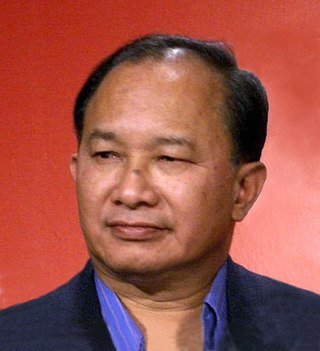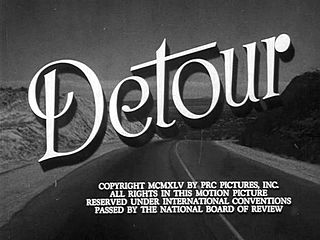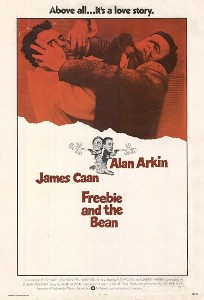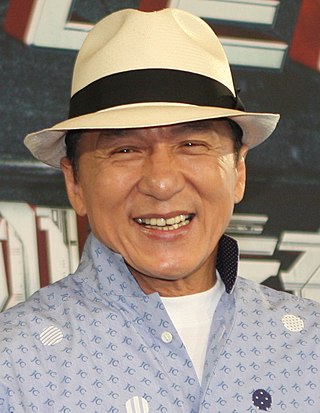
A comedy film is a film genre that emphasizes humor. These films are designed to amuse audiences and make them laugh. Films in this genre typically have a happy ending, with dark comedy being an exception to this rule. Comedy is one of the oldest genres in film, and it is derived from classical comedy in theatre. Some of the earliest silent films were slapstick comedies, which often relied on visual depictions, such as sight gags and pratfalls, so they could be enjoyed without requiring sound. To provide drama and excitement to silent movies, live music was played in sync with the action on the screen, on pianos, organs, and other instruments. When sound films became more prevalent during the 1920s, comedy films grew in popularity, as laughter could result from both burlesque situations but also from humorous dialogue.

John Woo Yu-Sen is a Hong Kong filmmaker, known as a highly influential figure in the action film genre. He is a pioneer of heroic bloodshed films and the gun fu genre in Hong Kong action cinema, before working in Hollywood films. He is known for his highly chaotic "bullet ballet" action sequences, stylized imagery, Mexican standoffs, frequent use of slow motion and allusions to wuxia, film noir and Western cinema.

The action film is a film genre that predominantly features chase sequences, fights, shootouts, explosions, and stunt work. The specifics of what constitutes an action film has been in scholarly debate since the 1980s. While some scholars such as David Bordwell suggested they were films that favor spectacle to storytelling, others such as Goeff King stated they allow the scenes of spectacle to be attuned to story telling. Action films are often hybrid with other genres, mixing into various forms ranging to comedies, science fiction films, and horror films.
The decade of the 1980s in Western cinema saw the return of studio-driven pictures, coming from the filmmaker-driven New Hollywood era of the 1970s. The period was when the "high concept" picture was created by producer Don Simpson, where films were expected to be easily marketable and understandable. Therefore, they had short cinematic plots that could be summarized in one or two sentences. Since its implementation, this method has become the most popular formula for modern Hollywood blockbusters. At the same time in Eastern cinema, the Hong Kong film industry entered a boom period that significantly elevated its prominence in the international market.

The cinema of the United States, consisting mainly of major film studios along with some independent films, has had a large effect on the global film industry since the early 20th century. The dominant style of American cinema is classical Hollywood cinema, which developed from 1910 to 1962 and is still typical of most films made there to this day. While Frenchmen Auguste and Louis Lumière are generally credited with the birth of modern cinema, American cinema soon came to be a dominant force in the emerging industry. With more than 600 English-language films released on average every year As of 2017, it produced the fourth-largest number of films of any national cinema, after India, Japan, and China. While the national cinemas of the United Kingdom, Canada, Australia, and New Zealand also produce films in the same language, they are not part of the Hollywood system. Because of this, Hollywood has also been considered a transnational cinema, and has produced multiple language versions of some titles, often in Spanish or French. Contemporary Hollywood often outsources production to the United Kingdom, Canada, Australia, and New Zealand. The major film studios of Hollywood are the primary source of the most commercially successful and most ticket-selling movies in the world.

The cinema of Hong Kong is one of the three major threads in the history of Chinese language cinema, alongside the cinema of China and the cinema of Taiwan. As a former British colony, Hong Kong had a greater degree of political and economic freedom than mainland China and Taiwan, and developed into a filmmaking hub for the Chinese-speaking world.

An exploitation film is a film that tries to succeed financially by exploiting current trends, niche genres, or lurid content. Exploitation films are generally low-quality "B movies", though some set trends, attract critical attention, become historically important, and even gain a cult following.
Buddy cop is a film and television genre with plots involving two people of very different and conflicting personalities who are forced to work together to solve a crime and/or defeat criminals, sometimes learning from each other in the process. The two are normally either police officers (cops) or secret agents, but some films or TV series that are not about two officers may still be referred to as buddy cop films/TV series. It is a subgenre of buddy films. They can be either comedies or action-thrillers.

A road movie is a film genre in which the main characters leave home on a road trip, typically altering the perspective from their everyday lives. Road movies often depict travel in the hinterlands, with the films exploring the theme of alienation and examining the tensions and issues of the cultural identity of a nation or historical period; this is all often enmeshed in a mood of actual or potential menace, lawlessness, and violence, a "distinctly existential air" and is populated by restless, "frustrated, often desperate characters". The setting includes not just the close confines of the car as it moves on highways and roads, but also booths in diners and rooms in roadside motels, all of which helps to create intimacy and tension between the characters. Road movies tend to focus on the theme of masculinity, some type of rebellion, car culture, and self-discovery. The core theme of road movies is "rebellion against conservative social norms".
Daniel Mannix Petrie Jr. is a Canadian-American producer, writer, and director of film and television. He is best known for pioneering the sub-genres of action comedy and buddy cop films through films like Beverly Hills Cop and Turner & Hooch. He served as President of the Writers Guild of America, West between 1997 and 1999, and then again between 2004 and 2005. He currently serves as the President of the Board of Directors at the Writers Guild Foundation.
The heist film or caper film is a subgenre of crime films and the caper story, focused on the planning, execution, and aftermath of a significant robbery.

Freebie and the Bean is a 1974 American buddy cop black comedy action film starring James Caan and Alan Arkin, and directed by Richard Rush. The film follows two offbeat police detectives who wreak havoc in San Francisco attempting to bring down an organized crime boss. The film, which had been originally scripted as a serious crime drama, morphed into what is now known as the "buddy-cop" genre due to the bantering, improvisational nature of the acting by Caan and Arkin. Reportedly, by the end of filming, both actors were confused by the purpose of the movie, not knowing that they had stumbled into a successful character formula. The film was popular enough to spawn various other successful film franchises such as, Lethal Weapon, 48 Hours and Beverly Hills Cop. Loretta Swit and Valerie Harper appeared in support roles.
Hong Kong action cinema is the principal source of the Hong Kong film industry's global fame. Action films from Hong Kong have roots in Chinese and Hong Kong cultures including Chinese opera, storytelling and aesthetic traditions, which Hong Kong filmmakers combined with elements from Hollywood and Japanese cinema along with new action choreography and filmmaking techniques, to create a culturally distinctive form that went on to have wide transcultural appeal. In turn, Hollywood action films have been heavily influenced by Hong Kong genre conventions, from the 1970s onwards.

Jackie Chan began his film career as an extra child actor in the 1962 film Big and Little Wong Tin Bar. Ten years later, he was a stuntman opposite Bruce Lee in 1972's Fist of Fury and 1973's Enter the Dragon. He then had starring roles in several kung fu films, such as 1973's Little Tiger of Canton and 1976's New Fist of Fury. His first major breakthrough was the 1978 kung fu action comedy film Snake in the Eagle's Shadow, which was shot while he was loaned to Seasonal Film Corporation under a two-picture deal. He then enjoyed huge success with similar kung fu action comedy films such as 1978's Drunken Master and 1980's The Young Master. Jackie Chan began experimenting with elaborate stunt action sequences in The Young Master and especially Dragon Lord (1982).

Marathi Cinema, also known as Marathi Chitrapat, is the segment of Indian cinema, dedicated to the production of motion pictures in the Marathi Language widely spoken in the state of Maharashtra. It is based in Mumbai. It is the oldest film industry of India and one of the leader in Filmmaking in India's film industry. The first Marathi talkie film was Ayodhyecha Raja, released in 1932, just one year after Alam Ara the first Hindi talkie, before releasing the Aayodhyecha Raja, all the Marathi films until then were Silent films with Intertitles.
Action comedy is a genre that combines aspects of action and comedy.

A bromance is a very close and non-sexual relationship between two or more men. It is an exceptionally tight, affectional, homosocial male bonding relationship exceeding that of usual friendship, and is distinguished from normal friendship by a particularly high level of emotional intimacy. The emergence of the concept since the beginning of the 21st century has been seen as reflecting a change in societal perception and interest in the theme, with an increasing openness of Western society in the 21st century to reconsider exclusivity constraints. The female versione of the bromance is the womance.

A female buddy film is a type of buddy film. In these films, women are the main characters and their friendships and relationships with each other drive the story. The plots of female buddy films can share the same concept of male buddy films—opposite personalities go on an adventure or journey of sorts—or they can concern an ensemble group of women. Female buddy films gained popularity in the 1960s from the emergence of the woman's film and the male buddy film genres.
A bromantic comedy is a comedy film genre that takes the formula of the typical "romantic comedy" but focuses on close male friendships.

African American cinema is loosely classified as films made by, for, or about Black Americans. Historically, African American films have been made with African-American casts and marketed to African-American audiences. The production team and director were sometimes also African American. More recently, Black films featuring multicultural casts aimed at multicultural audiences have also included American Blackness as an essential aspect of the storyline.















